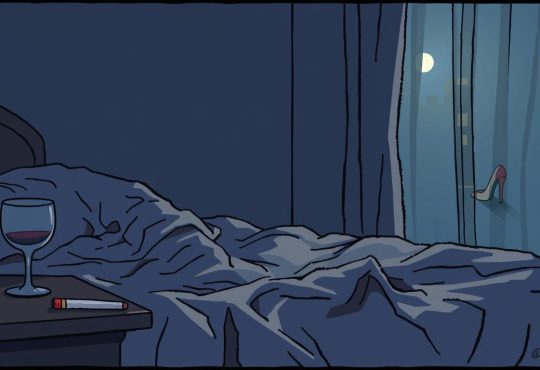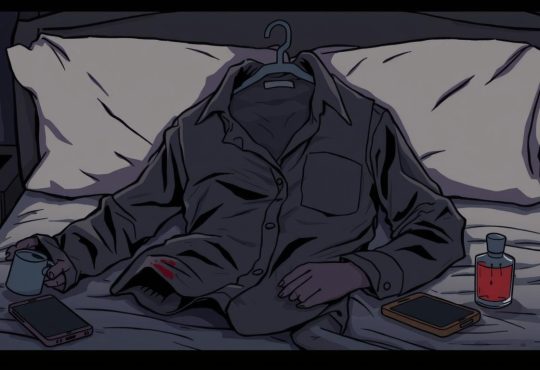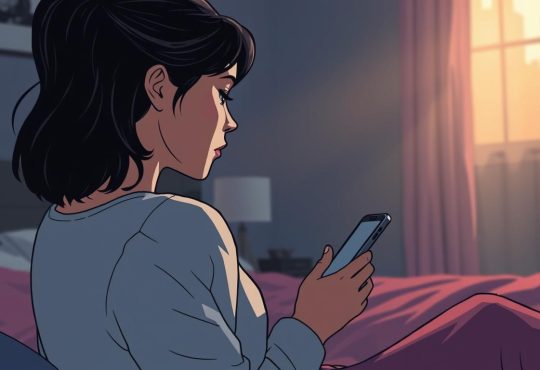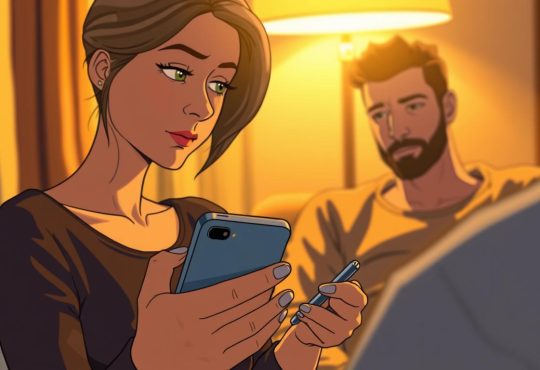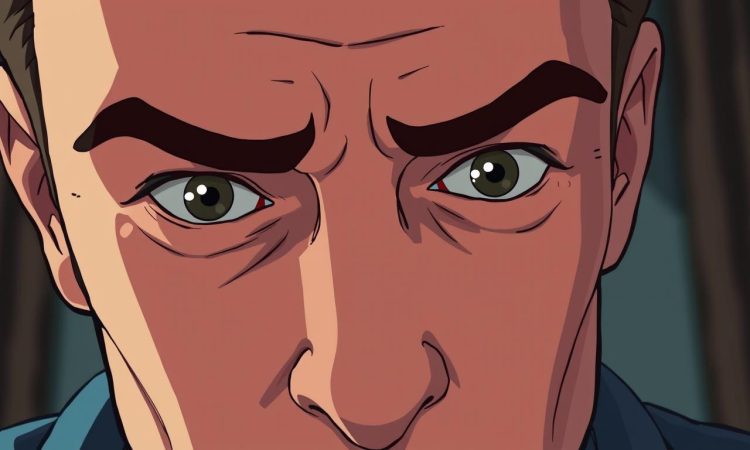
Have you ever noticed someone looking away during a conversation? Eye contact plays a huge role in how we connect with others. It’s a powerful tool for building trust and expressing emotions. But what happens when someone avoids it?
When a person avoids eye contact, it can leave us wondering. Is it a sign of discomfort, distraction, or something deeper? In this article, we’ll explore seven reasons behind this behavior. From anxiety to hidden feelings, we’ll break it down in a way that’s easy to understand.
Research shows that eye contact triggers oxytocin, the “bonding hormone.” It strengthens relationships and fosters connection. Yet, avoiding it can signal underlying issues like mental health challenges or cultural influences. Let’s dive in and uncover the answers together.
On this Page:
- 1 The Importance of Eye Contact in Building Connection
- 2 Behavioral Cues and What They Reveal
- 3 why is he avoiding eye contact all of a sudden
- 4 Uncovering Hidden Emotions Behind Avoidance
- 5 Social and Cultural Influences on Eye Contact
- 6 Interpreting Relationship Signals from His Behavior
- 7 How to Address and Communicate Your Concerns
- 8 Conclusion
The Importance of Eye Contact in Building Connection
What makes eye contact such a powerful tool in communication? It’s more than just a glance—it’s a way to build trust and strengthen relationships. When we look directly at someone, it signals genuine engagement and sincerity. This simple act can transform how we connect with others.
Studies show that 70% of communication is nonverbal, and eye contact plays a key role. It helps us convey confidence and understanding. In professional settings, like job interviews, maintaining eye contact can leave a lasting positive impression. In personal relationships, it fosters intimacy and trust.
Enhancing Trust and Confidence
Making eye contact releases oxytocin, often called the “love hormone.” This chemical strengthens bonds and enhances feelings of connection. When we hold someone’s gaze, it shows we’re present and attentive. This builds trust and deepens relationships over time.
In everyday life, eye contact is essential. Whether it’s a conversation with a friend or a meeting with a colleague, it helps us feel more connected. It’s a small but powerful way to show we care and are fully engaged.
Behavioral Cues and What They Reveal
Nonverbal cues often speak louder than words, especially in social interactions. The way someone moves, fidgets, or looks away can reveal underlying emotions. These subtle signals can help us understand what’s really going on beneath the surface.
Nonverbal Signs of Discomfort
When a person avoids direct eye contact, it’s often a sign of discomfort. Fidgeting, turning their head, or shifting their body can indicate nervousness or anxiety. These behaviors are common in situations where someone might feel uneasy or unsure.
For example, during a conversation, if someone frequently glances away or plays with their hands, they could be feeling stressed. Studies show that around 40% of individuals with social anxiety struggle to maintain eye contact. These cues are worth noting to better understand their emotional state.
Subtle Messages Behind Avoidance
Avoiding eye contact can also send hidden messages. It might signal disinterest, emotional discomfort, or even attraction. Context plays a key role in interpreting these behaviors. In some cases, it’s a protective mechanism to avoid vulnerability.
For instance, someone who avoids eye contact while discussing a sensitive topic might be hiding their true feelings. Alternatively, in romantic settings, this behavior could stem from shyness or fear of rejection. Observing these cues helps us decode the unspoken emotions in any relationship.
why is he avoiding eye contact all of a sudden
When someone looks away unexpectedly, it can leave us questioning their thoughts. A sudden shift in eye contact often signals deeper emotions or challenges. Understanding these changes helps us navigate relationships with care and insight.
One common reason for this behavior is emotional upheaval. Stress, anxiety, or personal struggles can make it hard for a person to maintain eye contact. Studies show that around 40% of individuals with social anxiety find this particularly challenging.
Another factor could be distraction. Life’s demands, like work or family issues, might pull their focus away. In some cases, it’s not about the relationship but external pressures taking a toll.
Context plays a key role in interpreting this behavior. If the change is sudden, it’s worth considering recent events or conversations. A deeper look at the relationship dynamics can reveal underlying issues.
Psychology experts suggest that avoiding eye contact can be a protective mechanism. It might stem from fear of vulnerability or discomfort with the topic at hand. Observing patterns over time helps us understand the root cause.
In relationships, this behavior could signal emotional distance or unresolved conflicts. Open communication is essential to address concerns and rebuild trust. Sometimes, a simple conversation can shed light on what’s really going on.
Uncovering Hidden Emotions Behind Avoidance
Understanding the emotions behind a person’s gaze can reveal deeper truths. When someone looks away, it’s often more than just a habit. It could be a window into their inner world, reflecting feelings they might not express verbally.
Let’s explore two key factors that contribute to this behavior: shyness and anxiety, as well as mixed signals of attraction. By examining these, we can better understand what’s really going on.
Shyness and Anxiety Factors
Shyness and anxiety often make it challenging for a person to maintain eye contact. These feelings can stem from social discomfort or fear of judgment. For instance, someone with social anxiety might avoid looking directly at others to reduce stress.
Studies show that around 40% of individuals with social anxiety struggle with this. Their behavior isn’t about disinterest but rather a coping mechanism. Recognizing this can help us approach them with empathy and patience.
Mixed Signals of Attraction
Sometimes, avoiding eye contact can signal attraction. A man might look away to hide his true feelings, especially if he’s unsure how they’ll be received. This behavior can be a subtle way to protect himself from vulnerability.
Body language experts note that nervousness often accompanies attraction. Fidgeting, blushing, or glancing away briefly can all be signs of interest. Context is key in interpreting these signals accurately.
Understanding these emotions can improve relationship dialogue. By paying attention to nonverbal cues, we can foster deeper connections and create a safe space for open communication.
Social and Cultural Influences on Eye Contact
Cultural backgrounds shape how we interpret nonverbal cues in unique ways. Eye contact, a universal form of communication, carries different meanings across societies. Understanding these variations helps us navigate relationships with empathy and insight.
In some cultures, direct eye contact is seen as a sign of confidence and honesty. For example, in the United States, maintaining eye contact during a conversation is often encouraged. It shows engagement and builds trust. However, this isn’t the case everywhere.
Cultural Norms and Communication Styles
In many Asian cultures, avoiding eye contact is a sign of respect, especially when speaking to elders or authority figures. It’s a way to show humility and deference. Similarly, in some Indigenous communities, prolonged eye contact can be considered intrusive or disrespectful.
On the other hand, in Western cultures, looking away might be interpreted as disinterest or dishonesty. These differences highlight how cultural upbringing shapes our behaviors. Recognizing these nuances is essential for effective communication.
Understanding cultural context also helps in interpreting relationship signals. For instance, a person from a culture that values reserved communication might avoid eye contact, not because they’re disinterested, but because it’s their norm. This awareness fosters better connections and reduces misunderstandings.
By considering these social influences, we can approach eye contact behaviors with greater sensitivity. It’s a reminder that communication styles are deeply rooted in cultural traditions. Embracing this diversity enriches our interactions and strengthens relationships.
Interpreting Relationship Signals from His Behavior
Decoding someone’s behavior can feel like solving a puzzle. In relationships, small actions often carry big meanings. One such action is the way a person uses eye contact. It can reveal a lot about their feelings and intentions.
Sometimes, a lack of eye contact might seem concerning. But it’s important to differentiate between red flags and innocent habits. Not every glance away signals a problem. For some, it’s simply a natural part of their communication style.
Red Flags Versus Innocent Habits
Red flags often involve consistent patterns of avoidance. If someone rarely makes eye contact during important conversations, it could signal emotional unavailability or disengagement. Research shows that 30% of liars look away when lying, while 70% maintain strong eye contact. This inconsistency can be a clue.
On the other hand, innocent habits are more about personality. Some people naturally feel uncomfortable with prolonged eye contact. It doesn’t mean they’re hiding something. Cultural influences or personal preferences often play a role here.
Evaluating the context is key. Consider the overall behavior, not just one action. For example, if a man avoids eye contact during a sensitive topic, it might indicate discomfort rather than deception. Open communication helps clarify these signals.
In relationships, understanding these cues fosters trust. Instead of jumping to conclusions, take time to observe patterns. Consistent behavior over time provides a clearer picture. Encourage honest dialogue to address any concerns.
Remember, eye contact is just one piece of the puzzle. Focus on the bigger picture to interpret relationship signals accurately. By doing so, you’ll build stronger connections and reduce misunderstandings.
How to Address and Communicate Your Concerns
Opening up about concerns in a relationship can feel challenging, especially when nonverbal cues like eye contact shift. It’s natural to wonder what’s behind these changes. Addressing them with care and understanding can strengthen your bond and foster trust.
Starting a conversation about these observations doesn’t have to be intimidating. With the right approach, you can create a safe space for honest dialogue. Here are some practical tips to help you navigate these discussions effectively.
Tips for Open Dialogue
When initiating a conversation, choose a calm and private setting. This helps the other person feel at ease. Begin by expressing your observations gently, such as, “I’ve noticed you seem a bit distant lately. Is everything okay?”
Use open-ended questions to encourage them to share their thoughts. For example, “How have you been feeling about our conversations?” This invites them to open up without feeling pressured. Compliment their efforts to communicate, as it reinforces positive behavior.
Active listening is key. Show empathy by nodding and maintaining eye contact when appropriate. This demonstrates that you’re fully engaged and value their perspective. Avoid interrupting, as it can make them feel unheard.
Building Trust Through Conversation
Trust grows when both parties feel understood. Acknowledge their feelings and validate their experiences. Phrases like, “I can see why you’d feel that way,” show empathy and build emotional connection.
Set aside dedicated time for these discussions. This ensures that both of you are focused and present. Research shows that consistent, meaningful conversations improve relationship satisfaction over time.
Finally, be patient. Change takes time, and rebuilding trust is a gradual process. By approaching these conversations with kindness and understanding, you’ll create a stronger, more resilient connection.
Conclusion
Navigating shifts in nonverbal communication can deepen our understanding of relationships. Eye contact plays a vital role in building trust and connection. Yet, when a person looks away, it’s essential to consider the context behind their behavior.
From social anxiety to cultural influences, many factors shape how we use eye contact. Understanding these reasons helps us approach conversations with empathy. Open dialogue fosters trust and strengthens bonds over time.
By observing patterns and addressing concerns with care, we can create meaningful connections. Remember, eye contact is just one piece of the puzzle. Focus on the bigger picture to build lasting relationships and encourage personal growth.



